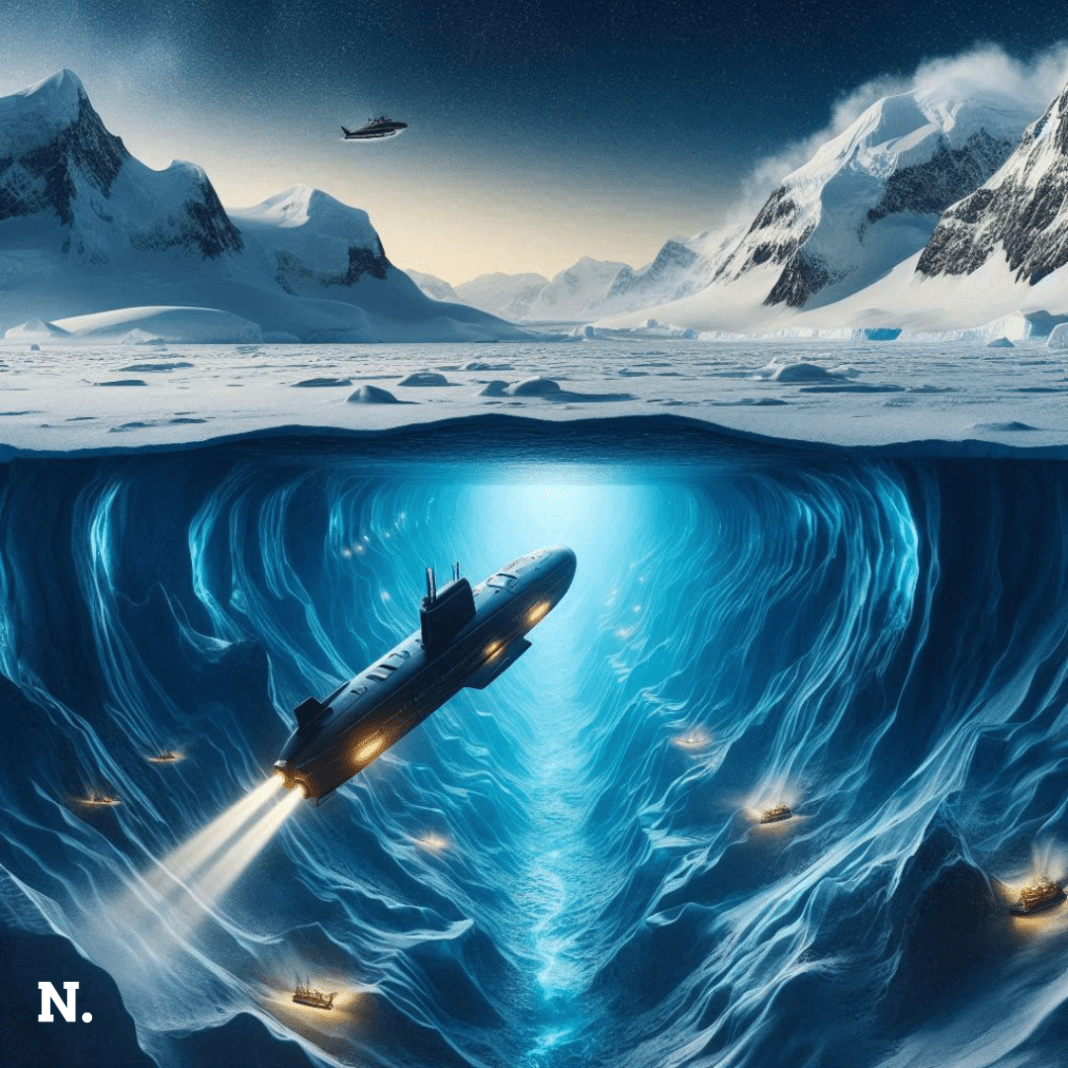A Lost Submarine Finds Its Way Under Antarctica
Something incredible has just come out of one of the coldest and most mysterious places on Earth—Antarctica. A robotic submarine named Ran, which had once gone missing during its mission, has now helped scientists unlock secrets buried deep beneath the South Pole’s ice.
The submarine wasn’t a typical one with people inside. It was an autonomous underwater vehicle, which means it could move and work on its own, guided by a computer. Scientists from around the world, working together from a university in Sweden, sent Ran to explore a giant glacier called Dotson Glacier in West Antarctica.
The journey was far from ordinary. The submarine traveled a total of 1,000 kilometers under the ice over 27 days. At one point, it went 17 kilometers deep into the glacier’s interior. That’s like traveling through a frozen tunnel the length of more than 150 football fields laid end to end. For a while, the team lost track of the submarine, making it feel like the mission was a failure. But when Ran returned, it brought back something priceless data that scientists say is as groundbreaking as “seeing the dark side of the moon.”
Glaciers Hiding Mountains, Valleys, and Fast-Moving Water
What did the submarine see under all that ice? It found a world that no one had ever seen before. Using sonar (a type of sound-based radar), Ran created detailed maps of the land beneath the glacier. The images showed that, far from being flat and boring, the underside of the glacier is packed with surprises—tall peaks, steep valleys, and even dune-like shapes, just like you’d see in a desert.
But even more important than the shapes of the land were the new discoveries about how the glacier is melting. Ran picked up data showing water rushing through cracks and fractures in the glacier from below. These cracks allow warmer ocean water to slip in and melt the glacier from the bottom up, faster than scientists thought was possible.
Cyberattack Catastrophe: How Hackers Can Endanger Human Lives ?
This kind of fast melting is a big deal. It changes what we know about how glaciers behave. Before this, scientists thought the glacier’s base was mostly smooth and slow to change. But now, with the new maps and measurements, they see that it’s way more active and complicated.
Old Theories Challenged by New Data
The mission’s findings are now forcing scientists to update how they think about glaciers. Old computer models used to predict how ice moves and melts didn’t account for this kind of complicated land under the ice. With the new data from Ran, scientists have started to rebuild these models to make them more accurate.
They also discovered that the shape of the land underneath might not just be random. It could be influenced by the way water flows over time and even by the spin of the Earth. All of this matters because it helps scientists figure out how fast glaciers are melting, and what that might mean for sea levels around the world.
Critical Vulnerabilities: The Dark Side of Pacemaker Technology
The detailed maps created by Ran are now helping scientists match what they see from satellites with what’s actually happening below. It’s a bit like using a map of your city from space and then comparing it to walking the streets yourself—one gives you a big picture, the other gives you the close-up truth.
While many questions still remain, one thing is clear: this journey by a robotic submarine has changed what we know about Antarctica. From a submarine thought to be lost to stunning maps of a hidden world under the ice, this mission has taken a huge leap forward in revealing just how complex and surprising our planet can be.





